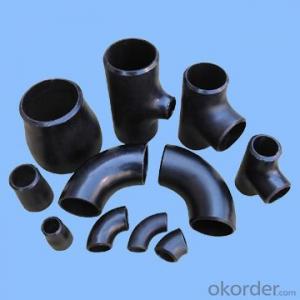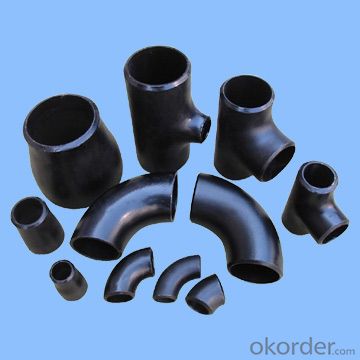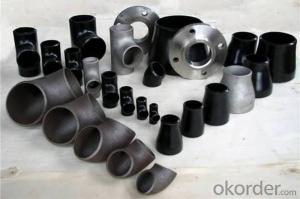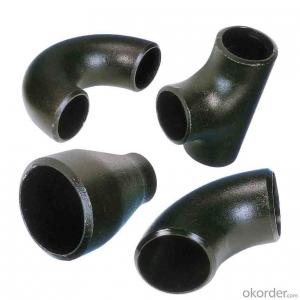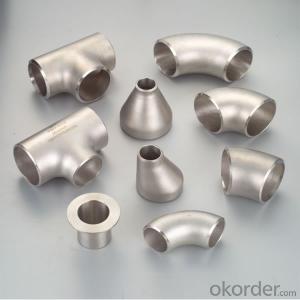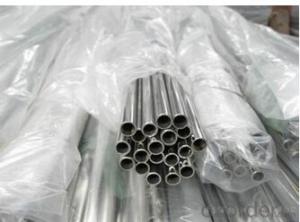3'' carbon steel pipe fittings ISO/ BS EN/DIN/ API
- Loading Port:
- Tianjin
- Payment Terms:
- TT OR LC
- Min Order Qty:
- 5 m.t
- Supply Capability:
- 300 m.t/month
OKorder Service Pledge
OKorder Financial Service
You Might Also Like
Products Detailed Description
Products | pipe fittings elbows, bends,tees, reducers caps |
Size | 1/2" - 48" |
Wall thickness | Sch5-Sch160 XXS |
Standard | ANSI, ASME API5L, OCT, DIN and JIS, etc. |
we can also produce according to drawing and standards provided by customers. | |
Material | Carbon steel, alloy steel and stainless steel. |
We can produce according to materials appointed by consumers. | |
Packaging | Plywood Cases,plywood pallet, plastic bag or as customers requirement |
Surface Treatment | Shot blasted, rust-proof black oil |
Delivery Time | 10-60 days |
Quality | First grade |
Others | 1.Special design available according to your drawing. |
2.anti-corrosion and high-temperature resistant with black painting | |
3. All the production process are made under the ISO9001:2000 strictly. | |
4. A conformity rate of ex-factory inspection of products. |
Specifications
Ansi B16.9 WPB carbon steel pipe fitting elbow tee reducer
Size:Seamless 1/2"-24" Welded 1/2"-48"
ANSI B16.9 WPB carbon steel pipe fitting elbow tee reducer
1.Size: Seamless 1/2"-24" Welded 1/2"-48"
2. WT: SGP, STD, SCH40, SCH80, SCH100,SCH120,SCH160,XS,XXS
3. Material:
stainless steel Grade: 201,304,304L,316,316L,317,317L,904L,and etc
carbon steel Grade: WPB,GRB, Q235,16MN
Alloy steel: st35.8,st52,wp11,wp22,wp12 wp l6
4. Standard: ASTM/AISI/DIN/JIS
5. Type: Concentric and eccentric
6. Surface treatment: Transparent oil, rust-proof black oil
7. Applications range: Applications range: for use in the petroleum, smelting, foodstuff, power, papermaking, chemical, medical equipment,aviation, boiler heat exchanger, and other fields
8. Packing: wooden case or as per customers' requirement
- Q: What are the different types of hangers used for supporting steel pipes?
- Supporting steel pipes requires the use of various hangers, each with its own distinctive design and purpose. Some commonly used types include: 1. Clevis Hangers: These hangers consist of a U-shaped loop that attaches to a support structure using a threaded rod. The pipe is then secured in place with a bolt. Clevis hangers are ideal for vertical pipe runs and provide excellent stability and support. 2. Split Ring Hangers: Designed with a split ring that wraps around the pipe, these hangers can be easily installed and adjusted. They are suitable for different pipe sizes and applications. 3. Pipe Clamps: Simple and versatile, pipe clamps consist of a metal clamp that wraps around the pipe and is secured to a support structure using screws or bolts. They come in various designs to accommodate different pipe sizes and ensure stability. 4. Beam Clamps: These hangers are specifically designed for overhead support beams or structures. They feature a clamp that wraps around the beam and attaches to the pipe using a threaded rod or bolt. Beam clamps are commonly used in industrial and commercial settings for horizontal pipe runs. 5. Roller Hangers: When pipe movement is necessary due to thermal expansion or contraction, roller hangers are used. They allow the pipe to move freely while still providing support, making them suitable for long pipe runs or areas with significant temperature variations. 6. Spring Hangers: Designed to support pipes and absorb vibrations or shocks, spring hangers consist of a spring element attached to a support structure and a rod or rod assembly that supports the pipe. They are often used to reduce noise or prevent damage caused by vibrations. These examples represent just a few of the hangers available for supporting steel pipes. The selection of a hanger depends on factors such as pipe size, weight, location, and specific installation requirements. It is recommended to consult with a professional or engineer to ensure the appropriate hangers are chosen for each specific application.
- Q: Can steel pipes be used for the construction of high-rise buildings?
- Yes, steel pipes can be used for the construction of high-rise buildings. Steel pipes offer several advantages such as high strength, durability, and resistance to fire, making them a suitable choice for supporting the structural load and ensuring the stability of tall structures. Additionally, steel pipes can be easily fabricated and installed, providing flexibility in design and construction.
- Q: Can steel pipes be bent or curved?
- Yes, steel pipes can be bent or curved using specialized machinery and techniques such as cold bending, induction bending, or hot bending.
- Q: How are steel pipes protected against external corrosion in coastal areas?
- Steel pipes in coastal areas are protected against external corrosion through various methods. One commonly used method is the application of protective coatings, such as epoxy or polyethylene, which act as a barrier between the steel surface and the corrosive elements in the coastal environment. Additionally, cathodic protection techniques, such as sacrificial anode systems or impressed current systems, are employed to prevent corrosion by providing a protective current to the steel pipes. Regular inspection and maintenance of these protective measures also play a crucial role in ensuring the long-term corrosion protection of steel pipes in coastal areas.
- Q: What is the tensile strength of steel pipes?
- The tensile strength of steel pipes can vary depending on the grade and type of steel used. However, on average, steel pipes typically have a tensile strength ranging from 300 to 700 megapascals (MPa).
- Q: What are the different types of gaskets used with steel pipes?
- There are several types of gaskets used with steel pipes, including spiral wound gaskets, ring joint gaskets, and non-metallic gaskets. These gaskets are used to create a tight seal between pipe flanges, preventing leakage of fluids or gases.
- Q: How are steel pipes used in high-rise buildings?
- Steel pipes are used in high-rise buildings for various purposes, including structural support, plumbing, and HVAC systems. They provide the necessary strength and durability to withstand the weight and forces exerted on tall buildings, while also facilitating the efficient distribution of water, gas, and air throughout the entire structure.
- Q: What are the different types of coatings used for external protection of steel pipes?
- There are several types of coatings used for external protection of steel pipes, including but not limited to: epoxy coatings, polyurethane coatings, fusion bonded epoxy (FBE) coatings, coal tar coatings, and zinc coatings. Each coating offers unique properties and benefits, such as corrosion resistance, abrasion resistance, and UV protection, to ensure the longevity and durability of the steel pipes in various environmental conditions.
- Q: Do steel pipes expand or contract with temperature changes?
- Steel pipes expand with temperature increases and contract with temperature decreases.
- Q: Are steel pipes resistant to impact or external forces?
- Yes, steel pipes are generally resistant to impact and external forces. Steel is known for its high strength and durability, making it an ideal material for various applications, including pipes. Steel pipes have the ability to withstand external forces such as impact, pressure, and vibrations. They are often used in industries that require reliable and sturdy piping systems, such as oil and gas, construction, and infrastructure. Additionally, steel pipes are less prone to cracking or breaking under extreme conditions compared to other materials. However, the resistance to impact and external forces may also depend on the specific grade and thickness of the steel used in the pipes.
Send your message to us
3'' carbon steel pipe fittings ISO/ BS EN/DIN/ API
- Loading Port:
- Tianjin
- Payment Terms:
- TT OR LC
- Min Order Qty:
- 5 m.t
- Supply Capability:
- 300 m.t/month
OKorder Service Pledge
OKorder Financial Service
Similar products
Hot products
Hot Searches
Related keywords
